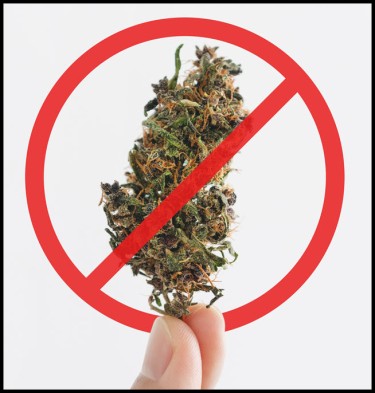Cannabis News
When AI Generated Art and Creativity Meet Cannabis
Published
2 years agoon
By
admin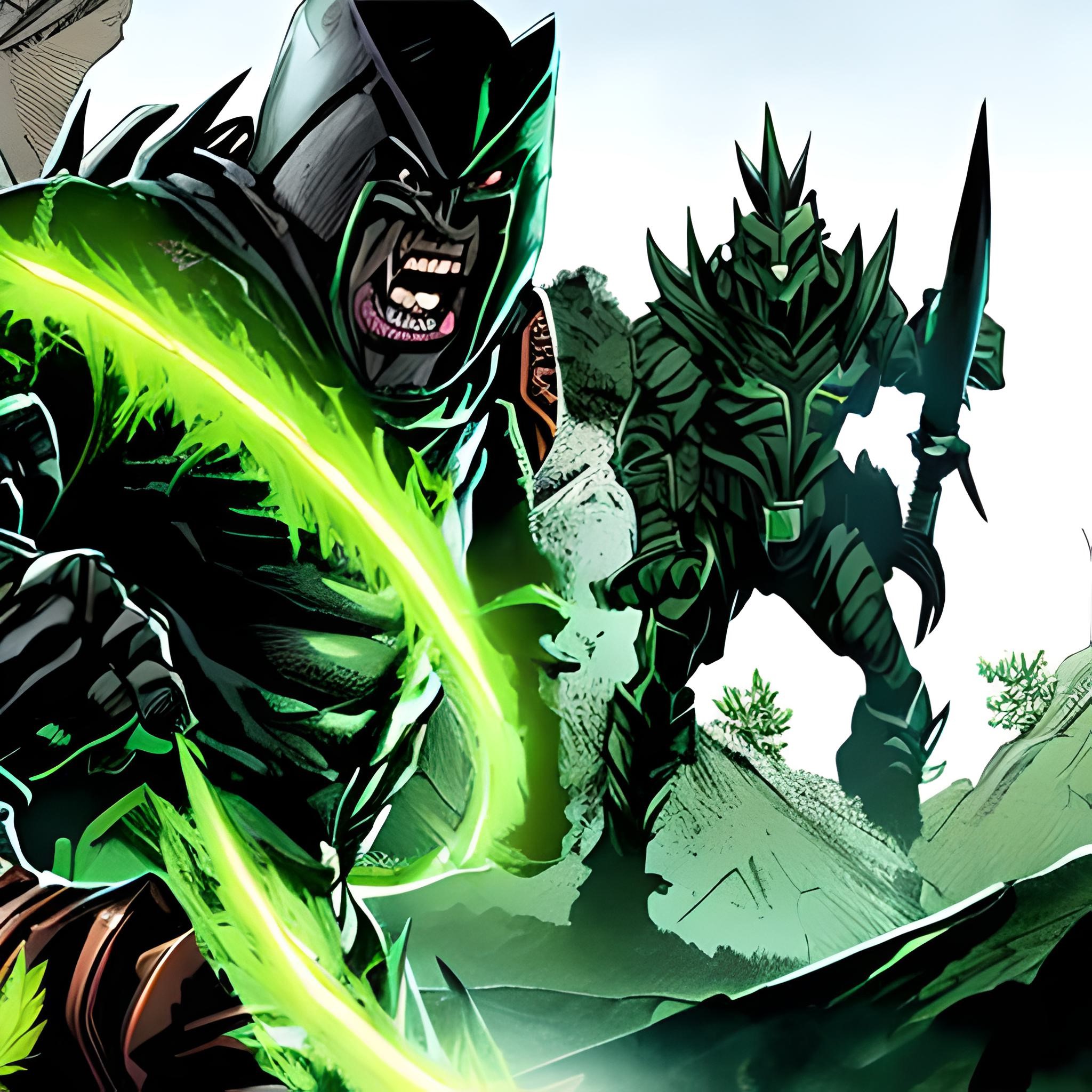
Stoner Meets A.I – When Creativity, Cannabis and Generative Art Mix You get Magick!
There’s so much content on the internet it’s absolutely mindboggling. I know I have added a tiny droplet in the infinite pool of content you can find online – however, for the most part – the content online isn’t “all that interesting”.
Seven out of ten blogs are fluff pieces written by underpaid writers who barely can string a coherent sentence together in English, sourcing the “other articles” online written by people like them.
Then, there’s about thirty percent of pure gold online.
Content crafted by seasoned professionals who understand how to not only speak to the reader, but provide actual value on the topics you find interesting.
I have been trying to do that for over a decade with cannabis. To go beyond “getting high” and the plant itself, but to explore every facet of it I possibly can.
Today, I’m going to be leading you down a visual rabbit hole in the crazy world of Generative Art. You may have heard about it before. Platforms like MidJourney, Stable Diffusion, Dali 2, and so forth all have made headlines lately.
In fact, there are so many advances in this field that it’s hard to keep up with it all. It’s my hopes however, that by the end of this article you will have a deeper appreciation of this technology and perhaps can even take a glimpse of “what’s possible” when you take a bit of weed, time, and creativity and mess around with these powerful programs.
It’s my intention to challenge your mind, inspire you, and perhaps surprise you a bit throughout this article so pay attention – because where about to wander into the wild world of A.I art.
An Appreciation of Artificial Intelligence
It’s hard to imagine a world without artificial intelligence. We rely on it for everything from ordering food to driving cars, but what if AI could also help us create?
Will Artificial Intelligence Advance or Hinder Human Creativity?
It’s a question that has been on the minds of many since IBM’s Watson won Jeopardy in 2011. Since then, AI’s role in the creative process has become more prominent. In fact, companies like Adobe have started using algorithms to create graphics and artworks. In some instances, these machine-generated images are indistinguishable from those created by humans. This kind of work is called “generative art,” and it is made possible by text-to-image platforms like Prisma and Google Deep Dream. These programs allow users to upload an image or text and then convert it into a different image using an algorithm that mimics creativity. While this technology may be helpful for artists who lack technical skills or don’t want to spend hours editing photos on their own, it raises questions about how much human interaction will be required for creativity in the future.
Now – here’s the first little MindF*ck I’m throwing your way.
The entire first 180 words of this segment was written entirely by A.I.
The crazy thing is that I had to do very little editing to make it sound like a cohesive idea that blends naturally with my original voice. This is kind of insane – especially for a writer like myself.
I have long been on the side that A.I will never be able to replace human ingenuity, however, these days I’m not so sure.
I’ve been writing for a long time. So long in fact that my wrists are all “battle worn” after decades of punching keys. I once calculated the rough estimation of words I have written professionally and it’s somewhere between 15,000,0000 to 20,000,000.
To be fair, a lot of this content was pure bullshit. Passionless writing chasing the almighty dollar.
However, there’s a large chunk of it that I’m extremely proud of. This piece included.
The point I’m trying to make here is that if I never told you that the first part of this first segment was written by algorithms, you would have simply assumed that I wrote it. After all, I never gave you any indication that I’d be utilizing A.I to write this article.
In fact, you still can’t be 100% sure that this isn’t A.I writing this article. Maybe if I drop a “f*ck-bomb” every now and then it might convince people that I’m human…or maybe that’s what an advanced computer algorithm would reason would be enough to convince human readers of its sentience?
These are questions that no stoner should ask too late at night! You might see the sunrise!
Nonetheless, while some people might be appalled by the idea that A.I can imitate human writing to such a degree that it becomes indistinguishable from human writing – I don’t think it’s such a bad thing. In fact, there are so many “fluff content” that most books have that if A.I could write it for me, I’d be very happy.
You see – all of these advancement in technology are simply tools in the minds of creatives. Some people will use it as a crutch to replace their own creativity – however, other people will use it to explore regions of their creativity they couldn’t dream of before A.I.
As a fair warning – there will be two more sections that will be written by A.I – let’s see if after being warned you can pick up when it’s “me” writing this, or when it’s “not-me”.
Meet THE DANK KNIGHT – The Subject of our Journey
NOTE: Before we continue, I’d like to inform you that this was original “Captain Cannabis” but since two people who have been in dispute for over 15-years about who’s the rightful “founder” of the most obvious cannabis-themed super hero requested both independently that I credit them in the article – I changed the character to “The Dank Knight”. This is a play on “The Dark Knight” but mixed with cannabis. Nobody “came up with it”, it’s an obvious fusion and if you want to “claim” that you invented it…go choke on a bag of dicks.
Now…onto the journey
I think it’s always more interesting to have something we can focus on when exploring deep topics. This is why I spent hours before hand on Stable Diffusion.
Stable Diffusion is like Midjourney, except it’s 100% free. There are countless tutorials online on how you can make your own server, but I simply went to the free version on the website (linked above).
Once on this software, it’s time to make prompts – and therefore I decided to utilize “Dank Knight” as the primary focal point of this journey. With the Dank Knight locked in place, I began giving it different prompts and what you’re about to see comes from hours of me going through different prompts to come up with these images.
 A “Prompt” is basically a command I give to the software so that it can take those words, use them to come up with interesting artworks.
A “Prompt” is basically a command I give to the software so that it can take those words, use them to come up with interesting artworks.
For example, to get this image I utilized the Prompt “The Dank knight, futuristic, A brooding and solitary hero, shadowy, cannabis helmet, full cannabis battle gear, action pose, comic book character, comic book art, no words, no blur, comic book cover, hd, detailed –AR 2:3”. A few seconds later, it produced this dude who certainly does have that “captain cannabis” feel to it.
However, this is only one interpretation of the Dank Knight I managed to create. Throughout the rest of the article I’m going to show you the Dank Knight in various different formats, styles, etc – so you can see just how insane these algorithms truly are.
For the sake of continuity, we’ll call this the “first version of The Dank Knight” and the origin character.
However, similar to Doctor Who – Captain Cannabis doesn’t remain in a singular body but is far greater than one vessel. It’s more a concept than a particular person.
DANK KNIGHT QUICK ORIGIN STORY I JUST MADE UP
Okay, so one day there was some Super Potent Space Weed that sparked itself into existence in the middle of a black hole. Being the purest incarnation of weed in the entire multiverse, it needed to seek  out a worthy host to share a body and mind, and to manifest itself into this reality because for this “cosmic space weed”, it existed outside of our concepts of time.
out a worthy host to share a body and mind, and to manifest itself into this reality because for this “cosmic space weed”, it existed outside of our concepts of time.
It was everywhere, all at once!
In order to focus its attention, it created millions of “cosmic space seeds” which it spread all throughout time and space.
A lucky stoner, who happened to find these seeds, germinate them, grow them in a particular manner with the right combination of nutrients and minerals – could harvest the “Cosmic Nugs” in which contained the very essence of this Cosmic Entity.
When the lucky stoner blazes up one of these nugs and inhales the smoke – they get transformed in a dank yellow cloud of smoke into the incarnation of this Cannabis Deity who identifies as “THE DANK KNIGHT”.
What makes it interesting is that this is an “Alchemical God”, meaning that when the entity fuses with the individual Stoner, it’s in fact the “third mind” which is “Captain Cannabis”. The “third mind” being the difference in frequency between the stoner’s mind and the mind of the cosmic cannabis spirit.
What the Dank Knight is supposed to do in this world is anyone’s guess. Some believe he (or she) is here to fight crime, but there isn’t really strong evidence for it.
It seems more that The Dank Knight is here to remove the bullshit from our lives, expose the lies told to us and told by us – and to enlighten the way with Dank fumes…
For some, who benefit from the masses being enslaved by “the bullshit” – Captain Cannabis is their sworn enemy. Yet no matter what they do, even if they manage to kill the vessel – the cosmic cannabis seeds will always find another host – in any of the multiple universes in existence.
The Many iterations of Captain Cannabis
As mentioned, Captain Cannabis isn’t tethered to a single person. In fact, there has been an infinite number of iterations of captain cannabis.
As you can see, all of these current iterations look like they come straight out of the pages of “Comic Books”. This is because I used these terms in the prompts to the A.I.
Now look what happens when I keep everything the same, but change the prompt to say “Movie Posters” instead of Comic Book Art.

Suddenly we have completely different renditions of the exact same phrase, “The Dank Knight”. The poster on the left seems like a strange and somewhat dark tale, while the one that looks like a Mix of Judge Dredd and some cyborg being, the one on the left magically fits within the same universe, just it seems that they had a different suit. Can someone spell “collectables!”
Nonetheless, both of these completely new iterations of The Dank Knight is completely valid and true within the larger Ethos of “Dank Knight”.
However, as I was continuing to explore this software, it suddenly gave me a different sub-angle to explore.
You see, the “Generative Art” space is a numbers game – along with knowing how to properly “prompt” the A.I. Any little tweak will give you a different result.
You have the ability to turn the character into a different sex, different style, T.V shows and so forth. Unfortunately, my editor limited the amount of pictures I can include, so just play around with the prompt above.
One final One for you…Dank Knight VS The Mold Monster…just awesome!
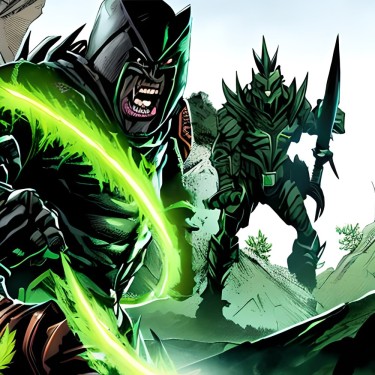
You can try anything!
Now, as we come to a close on this topic – let me quickly show you how versatile this software truly is. Our previous set of pictures were focused on “The Dank Knight”. But check what happens when we combine other words like “Cannabis Dragon!”
 This Dragon – though it has a weirdly configured body – gives the illusion of a dragon. Your mind immediately says, “Dragon”, and the little hairs on the tale definitely gives you the vibes of Marijuana.
This Dragon – though it has a weirdly configured body – gives the illusion of a dragon. Your mind immediately says, “Dragon”, and the little hairs on the tale definitely gives you the vibes of Marijuana.
And to think that this image didn’t exist until I decided to tap in a few words and wait a few minutes for this to render.
You can even include certain styles and rendering engines to create more “Photo Realistic” renditions of anything.
For example, sticking to the “Cannabis Dragon Theme”, check out what happens when you include the terms “Photorealism” and “Unreal Engine 5”.
 You get one of the scariest looking things that screams both “Dragon” and “Weed” but is neither.
You get one of the scariest looking things that screams both “Dragon” and “Weed” but is neither.
Nonetheless, there’s a sense of “Photorealism” to this picture and while this is a very rough rendition of what this software can do – it still leaves one speechless when you think that this was conjured in a matter of seconds.
The Sticky Bottom Line
At the end of the day, this technology is only going to get more and more accurate. While this does definitely help people like me who are not as “skilled” in creating these kinds of artworks myself, I don’t think that it will ever “replace” human creativity.
As mentioned, some people will rely heavily on this technology and perhaps their creativity will not be in the actual skill of making the art – but with coming up with the prompts.
To be able to write a coherent statement that the artificial intelligence can understand and reinterpret, is not easy.
In fact, you’ll need to know about the concepts you are prompting. I simply created commands that were basic, but when you start talking about volumetric lighting, color filters, depth of field, rendering engines, etc – you begin to get wildly different results.
Therefore, while there is no skill required to create beautifully looking, albeit sometimes weird artwork – the true skill comes in knowing how to describe these events.
As for “when did A.I write more of this article?”
The answer is Never!
I simply wanted you to think that there might be more A.I prompted text in this article, but I only used a snippet in the beginning.
However, if you were actively trying to figure out – I’m sure there were bits I sounded a bit “robotic”. Which was purposeful.
At the end of the day, I believe that this technology will allow many people to express themselves better, create mockups for products without having to know much about art – and communicate ideas more effectively.
It will not take away human creativity, only create a different means of being creative.
And if you’ve been reading up until this point – why not head over to Stable Diffusion, create a crazy weed related prompt – and post your favorite result in the comment section.
And I hope that for some, “The Dank Knight” now exists as a legitimate character you can use in your fictions. If you do use him/her, feel free to credit “Reginald Reefer” for some inspiration.
CANNABIS AND AI, READ ON…
You may like
Cannabis News
Autoimmune Conditions Are Rising Fast in American Medicine, Can Cannabis Help?
Published
24 hours agoon
November 21, 2024By
admin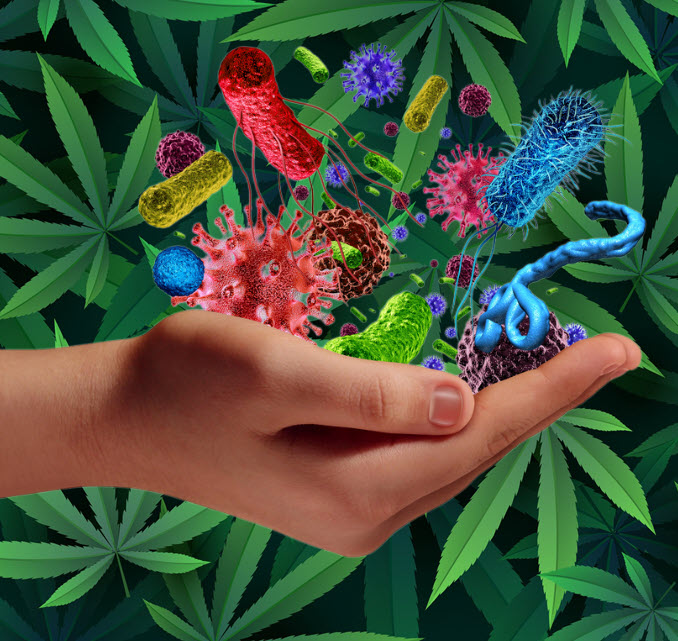
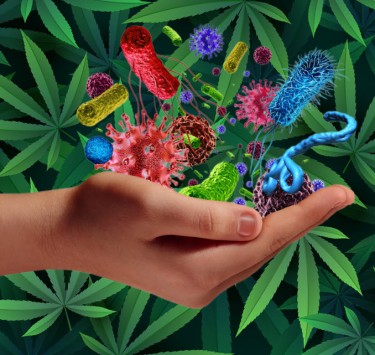
Why Are Autoimmune Conditions On The Rise? And How Cannabis Can Help
Autoimmune diseases refer to a group of medical conditions that occur as a result of the immune system attacking your own tissues.
In a normal human body, the immune system is responsible for protecting the body by producing antibodies that prevent toxins, cancer cells, and viruses from harming the body. However, when one is struck by an autoimmune disorder, the immune system is no longer able to distinguish the difference between dangerous cells and healthy cells. As a result, the healthy cells are attacked, too.
Today, we know of around 100 different kinds of autoimmune conditions. Some of the most common examples of autoimmune conditions include rheumatoid arthritis (RA), lupus, inflammatory bowel disease, celiac disease, Type 1 diabetes, multiple sclerosis (MS), and the Guillain-Barre syndrome (GBS) to name a few. Others include Graves’ disease, Hashimoto’s thyroiditis, psoriasis, and vasculitis.
According to the National Health Council, around 50 million Americans are affected by autoimmune diseases today. This is a conservative estimate, considering that several autoimmune conditions are tricky to treat and so many people go undiagnosed for long periods of time. It’s worrisome to note that there are more people developing autoimmune diseases these days, many of which have reached levels comparable to epidemics.
But cannabis can help!
How Cannabis Can Help Curb And Manage Autoimmune Diseases
Not one single cause is responsible for the alarming growth of autoimmune diseases, though there are several factors at play. While there isn’t just one cause we can point at, it’s certain the reasons lie in our environment. After all, human genetics haven’t changed significantly yet the chemicals, toxins, and pollutants in our food and everyday items have risen dramatically.
In addition, people are getting less sleep than ever; stress rates are through the roof, and people are constantly worried. There is a clear link between psychological stress and physical health as well as immunity, which is why it isn’t unusual – it’s even common – to see many autoimmune disease cases flare up after people experience severe stress caused by grief, an accident, job loss, or the death of a loved one. These highly stressful and traumatic conditions wreak havoc on the body’s immune response, causing inflammation all over the body.
Conventional treatments prescribed to treat autoimmune conditions are focused on taming inflammation; these usually include steroids but also some non-steroidal drugs. These drugs often come with unwanted side effects, but research has shown that cannabis can work with the endocannabinoid system through THC and CBD, as well as other cannabinoids, to simulate similar results. In one study for example, we can see the clear association of the endocannabinoid system for neurodegenerative and inflammatory processes seen in Multiple Sclerosis and Amyotrophic Lateral Sclerosis.
There has also been an increasing number of studies proving the efficacy of cannabis for treating several autoimmune conditions.
Cannabis For Multiple Sclerosis
Multiple sclerosis is one of the autoimmune conditions where a growing number of studies have come out supporting the therapeutic benefits of cannabis for. In a 2024 study, patients with multiple sclerosis reported several improvements in quality of life after using cannabis-based medical products (CBMPs). For the study, British investigators analyzed the impact of cannabis based medicinal products made from either oil or extracts in 141 patients who were enrolled in the UK Medical Cannabis Registry.
The researchers then analyzed the changes in patient outcomes after a month, then three and 6 months after. According to the patients themselves, they were able to sustain improvements in their mental and physical health after marijuana therapy.
“This case series demonstrates a potential association between the initiation of CBMPs and improved patient reported outcomes in sleep, anxiety, and general HRQoL [health-related quality of life] measures, over six months,” said the study authors. “Additional measures for HRQoL, including various physical and mental health subdomains, also exhibit improvements up to six months when compared to baseline,” the authors concluded.
In another study from 2023, patients with multiple sclerosis reported significant improvements in symptoms after cannabis use. For the study, researchers from the Dent Neurologic Institute in Buffalo, New York, analyzed the medical records of 141 patients with multiple sclerosis, who were also legally authorized to consume medical marijuana products. They then analyzed data from the patients after one up to 4 follow-up sessions after the initial session of cannabis therapy. Sixty-five percent of patients consumed 1:1 THC:CBD tinctures.
According to the authors: “The results of this study indicate that use of MC [medical cannabis] to alleviate symptoms of MS is largely efficacious, with improvement in pain (72 percent of patients), muscle spasticity (48 percent of patients), and sleep disturbance (40 percent of patients) frequently reported.”
“More than half of opioid users at baseline were able to either discontinue or decrease their opioid use after starting MC. The mean daily MME [morphine milligram equivalents] was significantly reduced from the initial visit (51 mg) to the last follow-up visit (40 mg). This is consistent with previous literature showing that MC legalization is associated with decreased opioid use and that MC use is associated with decreased opioid use in patients with chronic pain. These findings indicate that MC may represent an alternative analgesic to opioids for some patients,” they wrote.
Anecdotal Evidence
While more studies are needed to determine cannabis’ effect on other autoimmune conditions such as rheumatoid arthritis, we can rely on anecdotal evidence. In 2020, data from the medical journal, Rheumatology, revealed that patients who have this condition, along with those who have lupus and fibromyalgia, consume cannabis.
In fact, it was reported that marijuana was extremely common especially for patients with fibromyalgia. “In this meta-analysis, we found that one in six patients suffering from rheumatologic disease actively consumes cannabis, reducing pain reduction… A favorable effect of cannabis on pain in our meta-analysis reinforces the idea that cannabis could be used for analgesic purposes,” the authors concluded.
Conclusion
Cannabis is a safe and natural way to help prevent and treat the symptoms of autoimmune disease. It targets inflammation at its root, and is a proven natural way to help cope with stress, pain, insomnia, and inflammation all while protecting the brain. However, it’s important to ensure you medicate with clean, organic sources of marijuana.
AUTOIMMUNE AND CANNABIS, READ ON…

The U.S. Senate’s version of the Farm Bill finally landed this week. They’re calling it the Rural Prosperity and Food Security Act of 2024 (the “Senate bill”). The Senate bill follows on the House’s proposal, called the Farm, Food and National Security Act of 2024 (the “House bill”), offered in May. Neither the Senate bill nor the House bill would preempt state or Indian law regarding hemp or the regulation of hemp products. This means states and tribes will retain a lot of latitude in regulating hemp and hemp-derived products– which gets people fired up.
Aside from giving states some runway, the Senate bill and the House bill differ in key respects regarding hemp. Therefore, these august bodies must confer and reconcile their sundry proposals. That could happen in 2024, but seems more likely in 2025 when the new Congress convenes. As of this week, though, we finally have a framework.
The Senate Bill re-defines “hemp” and defines “industrial hemp”
Section 10016 of the Senate bill (“Hemp Production”) amends the definition of “hemp.” Hemp was defined in the 2018 Farm Bill and removed from the federal Controlled Substances Act (CSA), taking us on a truly wild ride. See: What Happened to Hemp? (“What Happened”). The Senate bill also gives us a definition for “industrial hemp.” Here are those definitions, with points of emphasis in bold:
(1) Hemp. The term “hemp” means (A) the plant Cannabis sativa L. and any part of that plant, including the seeds thereof and all derivatives, extracts, cannabinoids, isomers, acids, salts, and salts of isomers, whether growing or not, with a delta-9 total tetrahydrocannabinol concentration (including tetrahydrocannabinolic acid) of not more than 0.3 percent on a dry weight basis; and (B) industrial hemp.
(3) Industrial Hemp. The term “industrial hemp” means the plant Cannabis sativa L. if the harvested material (A) is only (i) the stalks of that plant, fiber produced from those stalks, or any other manufactured product, derivative, mixture, or preparation of those stalks (except cannabinoid resin extracted from those stalks); (ii) whole grain, oil, cake, nut, hull, or any other compound, manufactured product, derivative, mixture, or preparation of the seeds of that plant (except cannabinoid resin extracted from the seeds of that plant); or (iii) viable seeds of that plant produced solely for production or manufacture of any material described in clause (i) or (ii); and (B) will not be used in the manufacturing or synthesis of natural or synthetic cannabinoid products.
The new regime
Again, the definitional stuff in bold is what I want to emphasize.
First, the Senate bill keeps the THC threshold at 0.3 percent, which is an arbitrary number we’ve been advocating against for years. The Senate bill mirrors the House bill in this respect, though, so we are stuck with this, unless Ron Paul gets his way.
Second, the Senate bill keeps the 2018 Farm Bill’s total THC standard, including THCA. The House bill does this too. This was fairly predictable: in What Happened, I wrote that we could “expect the total THC standard to remain, which means that actual Delta-9 THC won’t be the only metric for calculating THC content.”
We’ve also explained on this blog that the 2018 Farm Bill and USDA rules mandate total THC testing on pre-harvest hemp batches, but do not mandate such testing on post-harvest hemp or hemp products. The Senate bill doesn’t change this paradigm, which means the “loophole” for gas station weed remains open. This proposal is a big win for opponents of the House bill’s “Miller Amendment,” which would narrow the definition of “hemp” to exclude intoxicating hemp-derived substances.
Third, the Senate bill introduces a new definition and framework for industrial hemp. The House bill does this too, albeit slightly differently. The idea here is to invite farmers to grow hemp for fiber and grain purposes, while freeing them from regulatory burdens with the Department of Agriculture and criminal exposure with the Department of Justice. More specifically, for “industrial hemp” growers, the Senate bill:
- removes background check requirements;
- instates “relaxed regulatory requirements” for sampling and inspection methodologies (which will need to be adopted by rule); and
- develops a certified seed program.
The Senate bill also makes any hemp producer ineligible to grow hemp for five years if that producer, “with a culpable mental state greater than negligence, produces a crop of hemp that is inconsistent with that license.”(Hint: use the seed program.) The proof standard here seems like it could be an issue, and even if anyone has been adjudicated as growing marijuana under the guise of hemp, Farm Bill ineligibility seems like a far-off concern.
Bottom line
The big takeaway for me is that the Senate bill leaves the door open for intoxicating hemp products, whereas the Miller Amendment to the House bill does not. Something’s gotta give. And it needs to happen soon, because we’re already long overdue. As I explained in a webinar last week, the Farm Bill deals with the nation’s entire food supply, not just hemp. Therefore, this is not like with the SAFE Banking Act, where we have a proposed law specific to cannabis that may or may not ever pass. The Farm Bill must pass, and soon.
Stay tuned and we’ll keep you updated on any major happenings. For more on this topic, check out our massive hemp and CBD archive, or these specific, recent posts:
Cannabis News
The Red Wall Blocking Marijuana Legalization in America, Real or Imagined?
Published
1 day agoon
November 21, 2024By
admin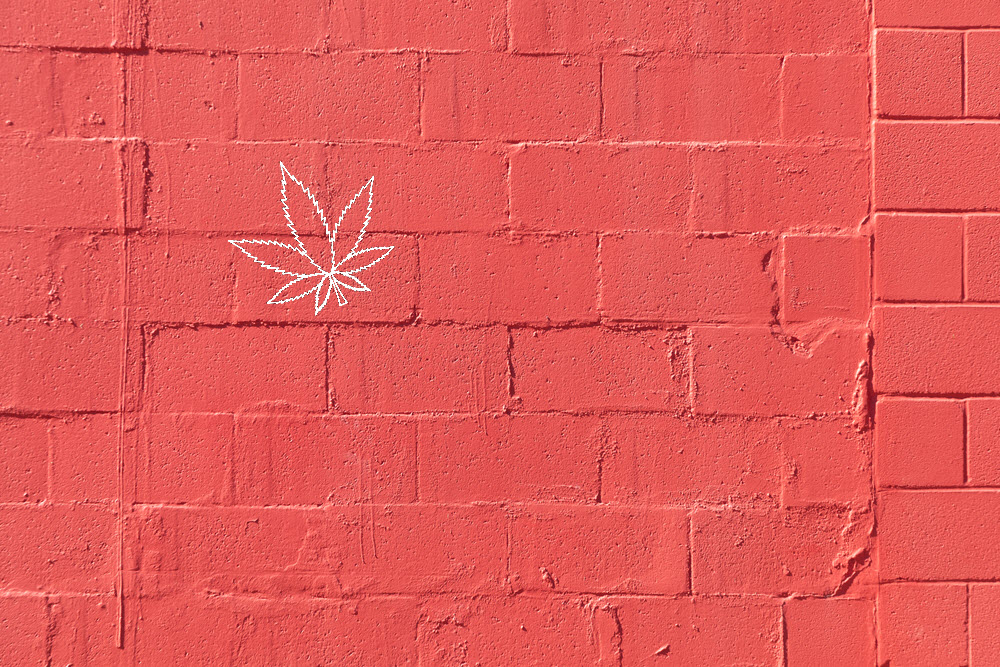

As the movement for marijuana legalization gains momentum across the United States, a significant barrier remains in place in many conservative states, forming what advocates and analysts have termed a “red wall.” This phenomenon highlights the stark divide between states that have embraced cannabis reform and those that continue to criminalize its use, particularly in areas where Republican leadership is firmly entrenched. This article will explore the current landscape of marijuana legalization, the factors contributing to this resistance, and the implications for consumers and advocates alike.
The Current State of Marijuana Legalization
Over the past decade, public opinion regarding marijuana has shifted dramatically. According to recent polls, approximately 68% of Americans support legalizing cannabis for recreational use. This shift has translated into legislative action, with 38 states and the District of Columbia allowing medical marijuana and 24 states legalizing it for recreational use. States like California, Colorado, and Illinois have set precedents with robust frameworks for both medical and recreational cannabis markets.
Despite this progress, a significant number of states remain resistant to change. As of 2024, there are still 20 states where marijuana is illegal for recreational use, many of which are governed by Republican majorities. This resistance is often attributed to a combination of political ideology, cultural attitudes, and concerns about public safety.
The Red Wall: A Political Barrier
The term “red wall” refers to the political landscape in conservative states where Republicans maintain control over both legislative chambers and the governor’s office—known as a trifecta. In these states, efforts to legalize cannabis face substantial obstacles due to party alignment and prevailing conservative values.
States such as Wyoming, Idaho, and Nebraska exemplify this red wall. Here, despite growing public support for legalization, lawmakers remain hesitant to advance legislation or allow ballot initiatives that would enable voters to decide on cannabis reform. The result is a patchwork of laws that leaves millions of Americans in conservative regions without access to legal cannabis.
Factors Contributing to Resistance
One of the primary reasons for the red wall against marijuana legalization is the deeply ingrained political ideology within conservative circles. Many Republican leaders view cannabis as a moral issue rather than a public health or economic one. This perspective is often rooted in traditional values that prioritize law and order over personal freedom.
Additionally, some conservative lawmakers express concerns about the potential societal impacts of legalization, including increased drug use among youth and impaired driving incidents. These fears can overshadow empirical evidence from states that have legalized cannabis, which often show no significant increase in youth usage or traffic accidents.
Cultural attitudes toward marijuana also play a significant role in shaping policy decisions in conservative states. In many regions, cannabis remains stigmatized as a dangerous drug associated with criminal behavior. This stigma can lead to fear-based policymaking that prioritizes prohibition over regulation.
Moreover, conservative communities may have strong ties to traditional industries such as agriculture and law enforcement that view marijuana legalization as a threat to their interests. These cultural dynamics create an environment where lawmakers are reluctant to support reform efforts that could alienate their constituents or undermine their political base.
Legislative Challenges
In addition to ideological resistance, practical legislative challenges further complicate efforts to advance marijuana legalization in conservative states. Many red wall states have stringent requirements for ballot initiatives or legislative proposals that make it difficult for advocates to gain traction.
For instance, some states require an exceptionally high percentage of signatures from registered voters to qualify for a ballot initiative. In Florida, a recent attempt to legalize recreational cannabis fell short of the required 60% supermajority needed for passage, despite receiving majority support from voters. Such hurdles can stifle grassroots efforts and limit opportunities for public input on cannabis policy.
Recent Developments in Red Wall States
Historically, ballot initiatives have been an effective strategy for advancing marijuana legalization in various states. However, this approach has faced increasing challenges in conservative strongholds. In North Dakota and South Dakota, recreational cannabis measures were defeated again in 2024 after previous attempts had also failed.
In South Dakota specifically, voters approved a legalization measure in 2020 only to see it challenged by state officials who argued it was unconstitutional. This led to protracted legal battles that ultimately stalled implementation efforts. Such experiences highlight how state officials can actively work against voter-approved measures when they conflict with prevailing political ideologies.
Legislative Efforts: Stalled Progress
In addition to ballot initiatives failing at the polls, legislative efforts in red wall states have also struggled to gain traction. For example:
-
Kansas: Despite growing support among residents for medical marijuana legalization, Republican lawmakers have repeatedly blocked proposals aimed at establishing a regulated medical program.
-
Kentucky: Efforts to legalize medical cannabis have faced significant hurdles in the state legislature despite bipartisan support among constituents.
-
Wisconsin: Governor Tony Evers has proposed measures to legalize both medical and recreational marijuana; however, these proposals have consistently met resistance from Republican-controlled legislative chambers.
These examples illustrate how even when there is public support for reform, entrenched political opposition can thwart progress.
Implications for Consumers and Advocates
Continued Criminalization
The persistence of the red wall means that millions of Americans living in conservative states continue to face criminal penalties for cannabis use. Individuals caught with small amounts of marijuana can face fines or even jail time disproportionately affecting marginalized communities.
Moreover, the lack of legal access forces consumers into unregulated markets where product safety cannot be guaranteed. This situation poses health risks associated with untested products and contributes to ongoing cycles of criminalization rather than promoting responsible use through regulation.
Economic Consequences
The economic implications of maintaining prohibition are significant as well. States that refuse to legalize cannabis miss out on substantial tax revenue generated from regulated markets. For instance:
-
Colorado: Since legalizing recreational marijuana in 2014, Colorado has generated over $1 billion in tax revenue from cannabis sales.
-
California: The state’s legal cannabis market is projected to generate billions annually in tax revenue—money that could be used for education, infrastructure, and public health initiatives.
In contrast, conservative states that uphold prohibition forego these potential revenues while also incurring costs associated with enforcing drug laws and managing related criminal justice issues.
Advocacy Strategies Moving Forward
Given the challenges posed by the red wall, advocates for marijuana legalization must adapt their strategies if they hope to make progress in conservative states:
The Future of Marijuana Legalization
As we look ahead, it is clear that overcoming the red wall will require persistent effort from advocates committed to changing hearts and minds within conservative states. While progress may be slow and fraught with challenges, shifts in public opinion suggest that change is possible.
The ongoing conversation surrounding federal rescheduling under President Biden’s administration could also influence state-level policies. If cannabis were moved from Schedule I to Schedule III under federal law—a move some speculate could happen under future administrations—states might feel pressured to reconsider their own prohibitive laws.
Ultimately, navigating this complex landscape will require resilience from advocates who understand both the political realities at play and the potential benefits of legalization for consumers and society as a whole.
Conclusion
The “red wall” against marijuana legalization represents a formidable barrier within many conservative states where outdated perceptions about cannabis persist alongside strong political opposition. As public opinion continues to evolve nationally favoring greater acceptance of both medical and recreational use advocates must adapt their strategies accordingly.
By building coalitions across diverse groups and focusing on education at the community level while pursuing incremental reforms where possible, advocates can work toward dismantling this barrier over time. The journey toward comprehensive marijuana reform may be long and challenging; however, with sustained effort and commitment from supporters across all sectors of society including those residing behind the red wall progress is achievable.
CONSERVATIVES BLOCKING CANNABIS BILLS?, READ ON…

Expert Lighting Tips For Successful Indoor Growing Weed

Acne And CBD: Exploring Alternative Dermatological Solutions

Can I Gift Marijuana This Holiday Season?

The Best Cocktails For An Easy Festive Thanksgiving

420 Vacations: Planning the Perfect Weed Vacation

Can Microdosing Help Manage Holiday Family Anxiety

11 Weed Shows and Movies on Netflix Worth Watching

Lawsuit Says DEA Acting In Bad Faith Over Marijuana

Autoimmune Conditions Are Rising Fast in American Medicine, Can Cannabis Help?

Hemp and the New Senate Farm Bill

Distressed Cannabis Business Takeaways – Canna Law Blog™

United States: Alex Malyshev And Melinda Fellner Discuss The Intersection Of Tax And Cannabis In New Video Series – Part VI: Licensing (Video)

What you Need to Know

Drug Testing for Marijuana – The Joint Blog

NCIA Write About Their Equity Scholarship Program

It has been a wild news week – here’s how CBD and weed can help you relax

Cannabis, alcohol firm SNDL loses CA$372.4 million in 2022

A new April 20 cannabis contest includes a $40,000 purse

Your Go-To Source for Cannabis Logos and Designs

UArizona launches online cannabis compliance online course
Trending
-

 Cannabis News2 years ago
Cannabis News2 years agoDistressed Cannabis Business Takeaways – Canna Law Blog™
-

 One-Hit Wonders2 years ago
One-Hit Wonders2 years agoUnited States: Alex Malyshev And Melinda Fellner Discuss The Intersection Of Tax And Cannabis In New Video Series – Part VI: Licensing (Video)
-

 Cannabis 1012 years ago
Cannabis 1012 years agoWhat you Need to Know
-

 drug testing11 months ago
drug testing11 months agoDrug Testing for Marijuana – The Joint Blog
-

 Education2 years ago
Education2 years agoNCIA Write About Their Equity Scholarship Program
-

 Cannabis2 years ago
Cannabis2 years agoIt has been a wild news week – here’s how CBD and weed can help you relax
-

 Marijuana Business Daily2 years ago
Marijuana Business Daily2 years agoCannabis, alcohol firm SNDL loses CA$372.4 million in 2022
-

 California2 years ago
California2 years agoA new April 20 cannabis contest includes a $40,000 purse






